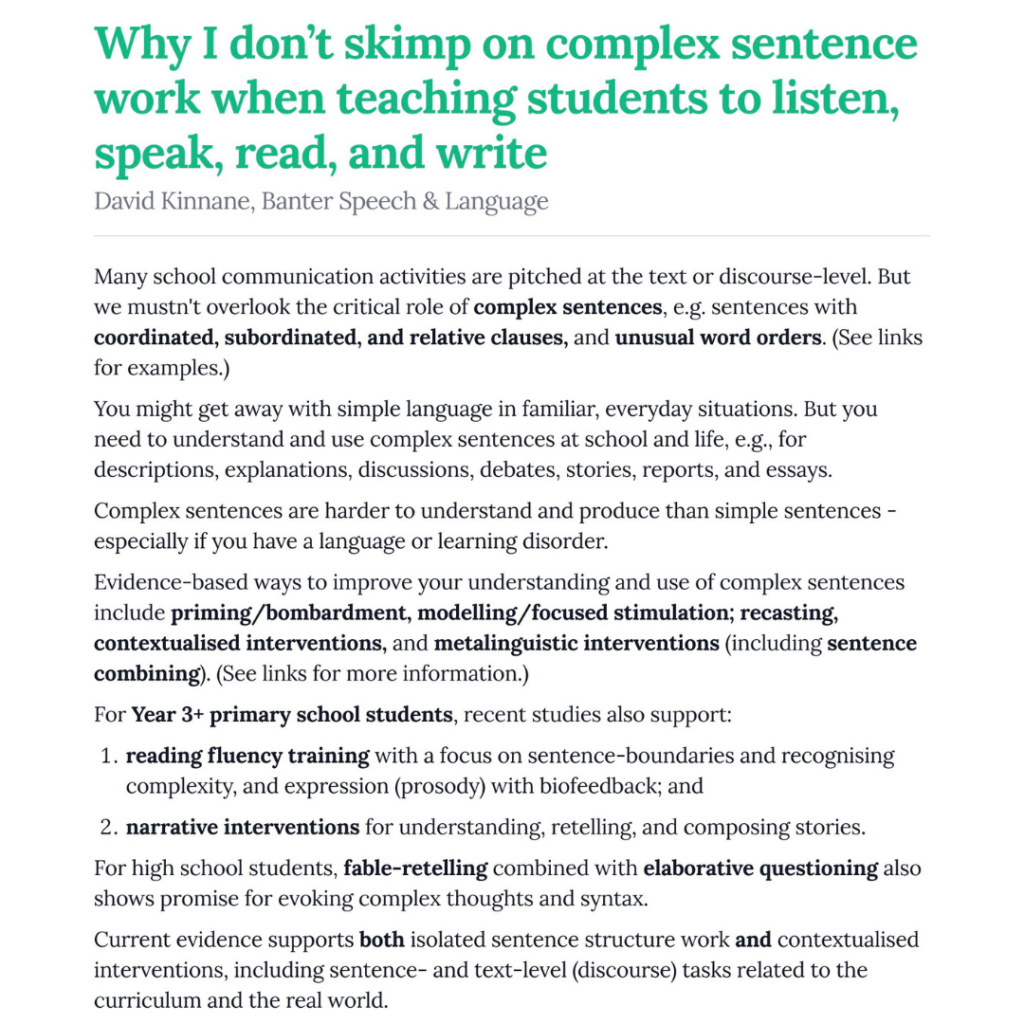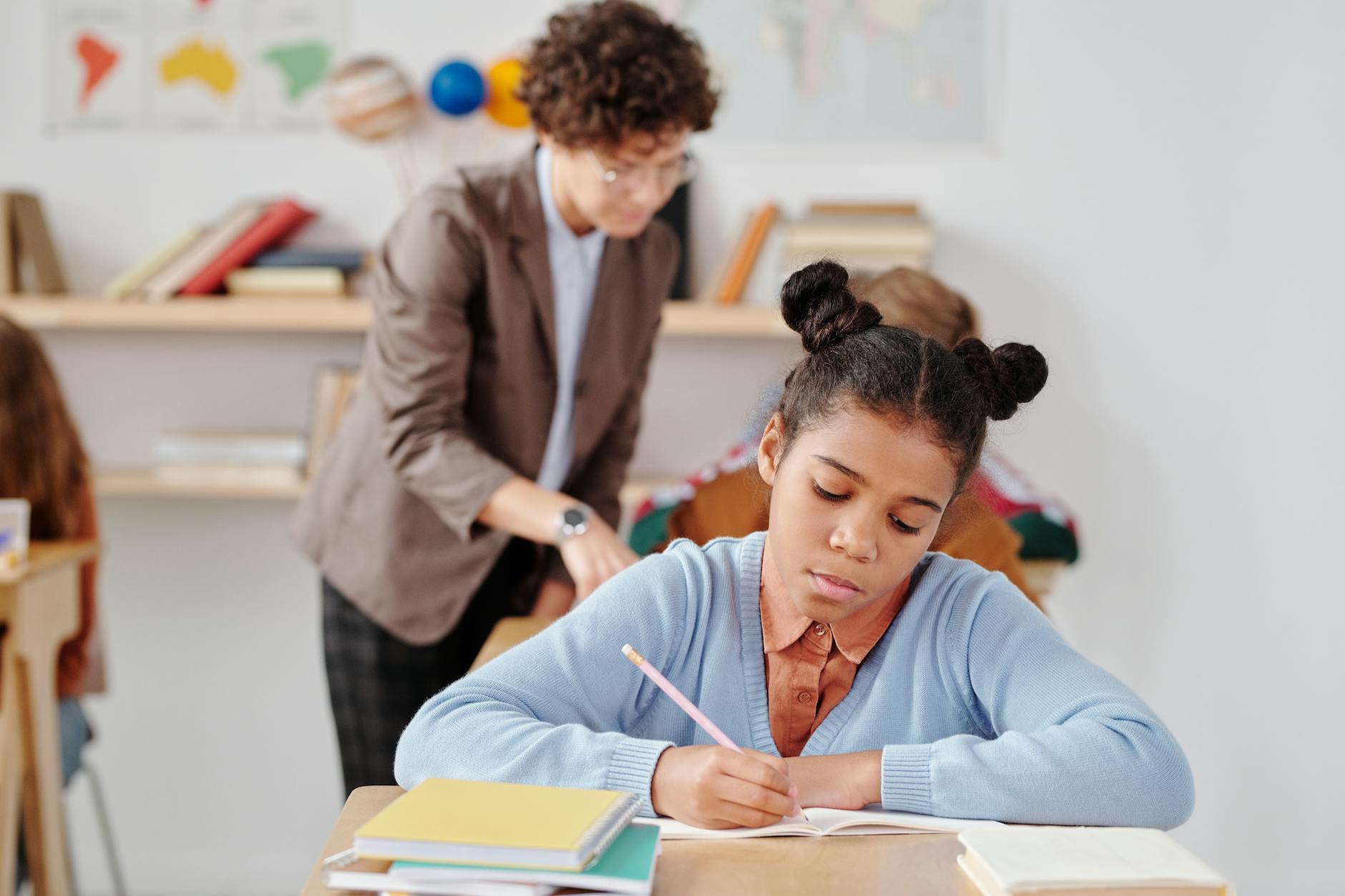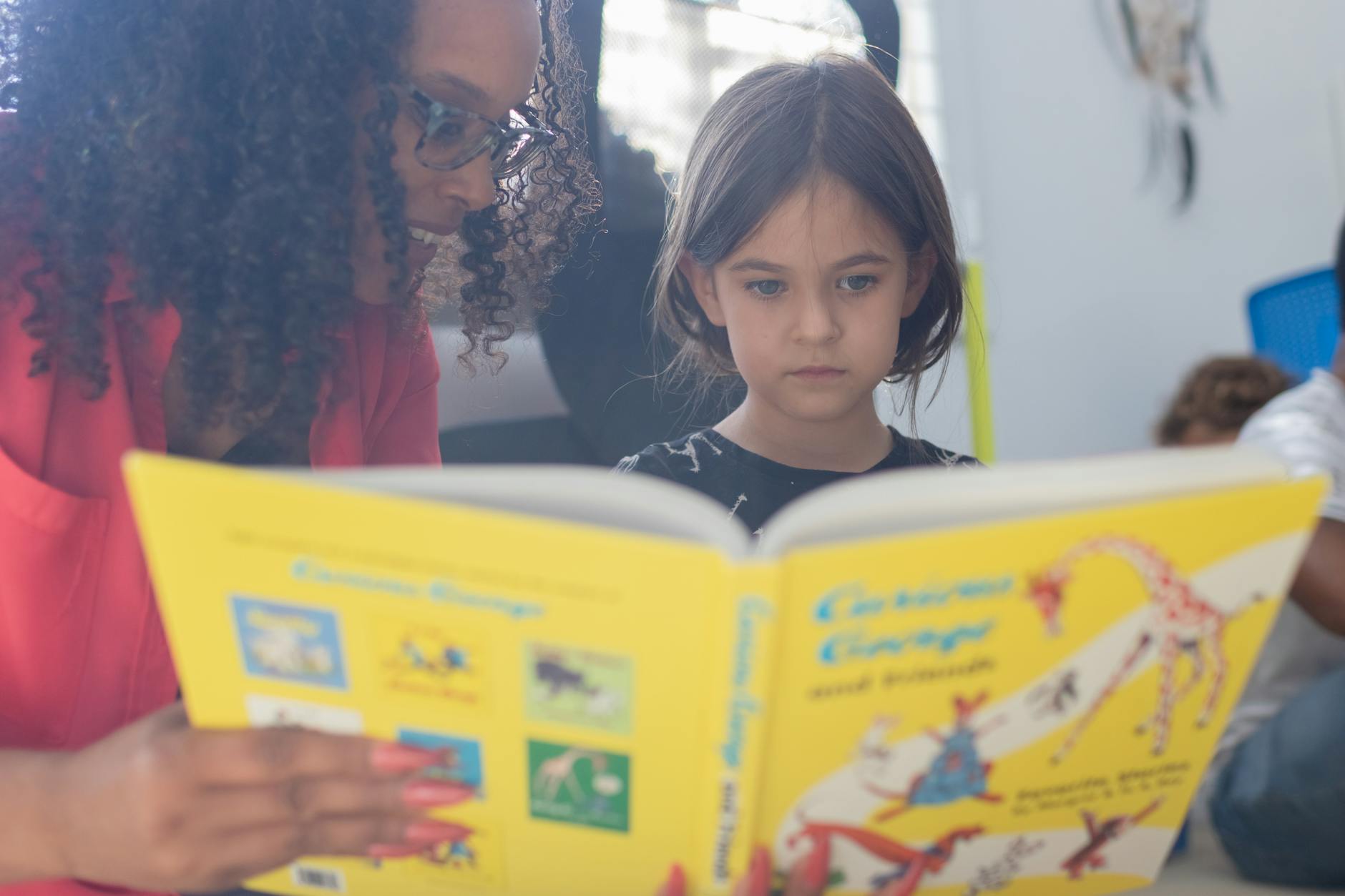Don’t skimp on complex sentence work when teaching students to listen, speak, read, and write
Balthazar & Scott (2018) radically transformed my approach to oral language therapy. Balthazar & Scott (2024) have done it again – this time with my writing instruction. Here’s why I don’t skimp on complex sentence work when teaching students to listen, speak, read, and write:
Many school communication activities are pitched at the text or discourse-level. But we mustn’t overlook the critical role of complex sentences, e.g. sentences with coordinated, subordinated, and relative clauses, and unusual word orders. (See links below for examples.)
You might get away with simple language in familiar, everyday situations. But you need to understand and use complex sentences at school and life, e.g., for descriptions, explanations, discussions, debates, stories, reports, and essays.
Complex sentences are harder to understand and produce than simple sentences – especially if you have a language or learning disorder.
Evidence-based ways to improve your understanding and use of complex sentences include priming/bombardment, modelling/focused stimulation; recasting, contextualised interventions, and metalinguistic interventions (including sentence combining). (See links below for more information.)
For Year 3+ primary school students, recent studies also support:
- reading fluency training with a focus on sentence-boundaries and recognising complexity, and expression (prosody) with biofeedback; and
- narrative interventions for understanding, retelling, and composing stories.
For high school students, fable-retelling combined with elaborative questioning also shows promise for evoking complex thoughts and syntax.
Current evidence supports both isolated sentence structure work and contextualised interventions, including sentence- and text-level (discourse) tasks related to the curriculum and the real world.
Principal source: Balthazar, C.H. & Scott, C.M. (2024). Sentences Are Key: Helping School-Age Children and Adolescents Build Sentence Skills Needed for Real Language. American Journal of Speech-Language Pathology, 33, 564-579.

Links to other articles:
Reading fluency interventions can help primary school students with reading difficulties
How to help a disorganised student: some practical ideas and resources
Help primary school students learn to write with sentence-combining practice
Language therapy works. But can we make it better?
Oral language comprehension: what is it? A plain English explainer
Free resource:
Help your Reluctant Writer: free ebook
Other resources:
Aesop’s Fables: Narrative Language Workout Bundle
Banter Oral Language Workbook: Complex Sentence Structures
(L501) Listen then Speak 1: an oral language workout for students in Years 2-5








